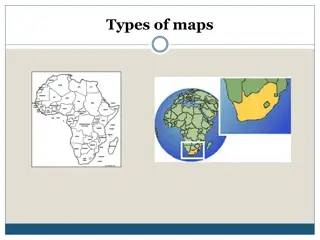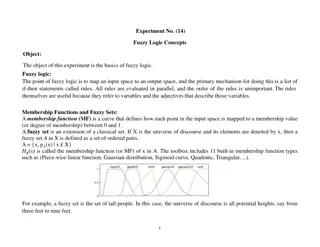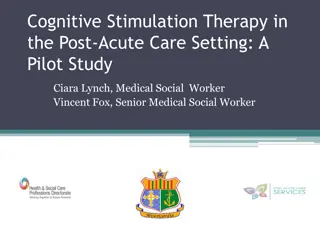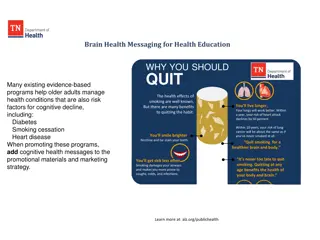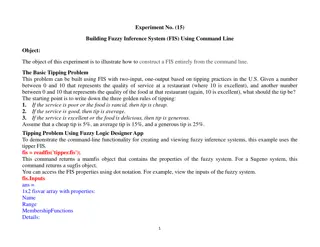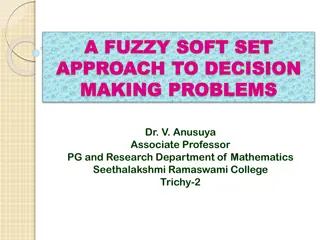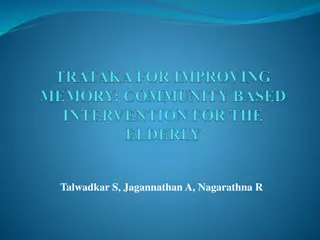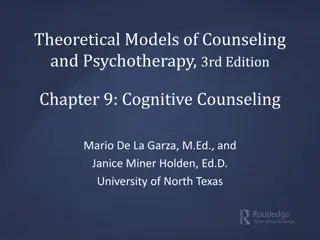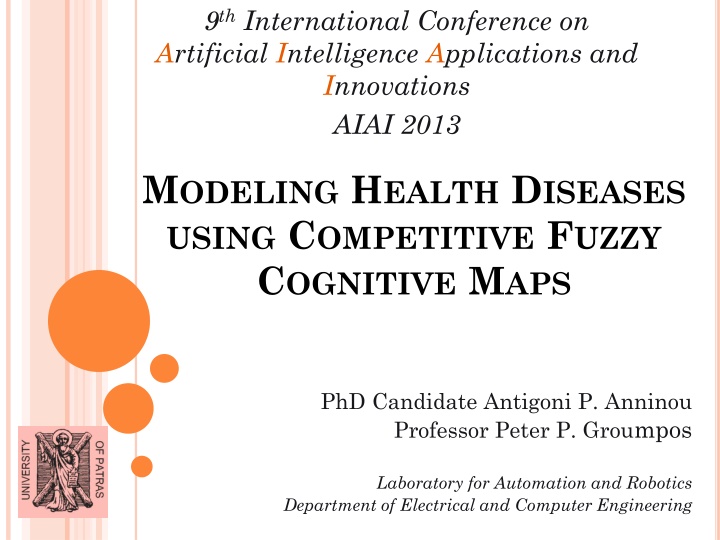
Innovative Approach to Modeling Health Diseases with Competitive Fuzzy Cognitive Maps
Explore the utilization of Competitive Fuzzy Cognitive Maps in modeling knee injuries and decision support systems in the context of medical diagnosis. Learn how this advanced modeling tool addresses challenges in medical decision-making by handling vast, uncertain data effectively.
Download Presentation

Please find below an Image/Link to download the presentation.
The content on the website is provided AS IS for your information and personal use only. It may not be sold, licensed, or shared on other websites without obtaining consent from the author. If you encounter any issues during the download, it is possible that the publisher has removed the file from their server.
You are allowed to download the files provided on this website for personal or commercial use, subject to the condition that they are used lawfully. All files are the property of their respective owners.
The content on the website is provided AS IS for your information and personal use only. It may not be sold, licensed, or shared on other websites without obtaining consent from the author.
E N D
Presentation Transcript
9th International Conference on Artificial Intelligence Applications and Innovations AIAI 2013 MODELING HEALTH DISEASES USING COMPETITIVE FUZZY COGNITIVE MAPS PhD Candidate Antigoni P. Anninou Professor Peter P. Groumpos Laboratory for Automation and Robotics Department of Electrical and Computer Engineering
OUTLINE Aim Decision Support Systems Fuzzy Cognitive Maps Augmenting FCMs using Case Based Reasoning Competitive Fuzzy Cognitive Maps Competitive Fuzzy Cognitive Maps for Knee Injuries Conclusions 2
AIM Present A new approach in modeling knee injuries using Competitive Fuzzy Cognitive Maps (CFCMs) Simulation Results 3
DECISION SUPPORT SYSTEM (DSS) Definition: Interactive computer based support system for making decisions in any complex system, when individuals or a team of people are trying to solve unstructured problems on an uncertain environment Aim: Reach acceptable and realistic decisions Methodology: experience Exploitation of experts 4
PROBLEMSINMEDICALDECISIONSUPPORT SYSTEMS High amount of data and information from interdisciplinary sources Medical information may be vague, or missing Variety of inputs in order to infer the final diagnosis 5
SOLUTION A modeling tool that can handle all these challenges and at the same time to be able to infer a decision A special type of FCM has been introduced for Medical Diagnosis systems, with advanced capabilities, the Competitive Fuzzy Cognitive Map (CFCM) 6
FUZZY COGNITIVE MAPS (FCM) (1/2) Modeling method for describing particular domains Fyzzy-graph reasoning structures for representing causal 7
FUZZY COGNITIVE MAPS (2/2) Nodes: Represent the system s concepts or variables Arrows: between nodes. Show the cause- effect relationship them W: Interrelationship two nodes: W>0 positive causality W<0 causality W=0 no relationship Interconnection between between negative 8
TYPES OF CONCEPTS In Cognitive Maps consist of two different types of concepts: the n decision-concepts the m factor-concepts Decision-Making Systems the Fuzzy The factor-concepts can be considered as inputs whereas the decision-concepts as outputs 9
CASE BASED REASONING (CBR) Advantages: Use the CBR subsystem to generate a sub-FCM emphasizing the nodes activated by the patient data and thus redistributing the causal weights between the concept-nodes Avoid the possibility of a wrong diagnosis by using only a small part of nodes of the entire system 10
COMPETITIVE FUZZY COGNITIVE MAPS (CFCM) The output nodes of a FCM used in decision- making, in many cases, must "compete" against each other in order for only one of them to dominate and be considered the correct decision In interaction of each of these nodes with the others should have a very high negative weight. This implies that the higher the value of a given node, the lower the value of competing nodes order to achieve this "competition", the 11
COMPETITIVE FUZZY COGNITIVE MAPS FOR KNEE INJURIES n decision-nodes (as outputs): C1: Overuse injuries C2: Patellofemoral pain syndrome C3: Osteochondritis dissecans of the femoral condyles C4: Tibial tuberosity apophysitis C5: Iliotibial band syndrome C6: Biceps femoris tendinitis C7: Inferior patellar pole osteochondritis 13
COMPETITIVE FUZZY COGNITIVE MAPS FOR KNEE INJURIES m factor-nodes (as inputs): C8: Patellar Instability C9: Patellar Crepitation C10: Patella Dislocation C11: Patella Pain C12: Rectus Femoris Pain C13: Muscle Pain C14: Quadriceps Pain C15: Tendon Injury C16: Edema C17: Heat C18: Passive Hyperextension Pain C19: Active Hyperextension Pain C20: Pain during exercise C21: Patellofemoral Joint Crepitation 14
COMPETITIVE FUZZY COGNITIVE MAP FOR KNEE INJURIES 15
LINGUISTIC VARIABLES OF THE CONCEPTS RELATIONSHIPS 16
SIMULATION RESULTS (1/3) After: defuzzification method the recursive algorithm each node converges to a final value and the decision node with the maximum value is the most possible diagnosis based on the model 17
SIMULATION RESULTS (2/3) Subsequent values of concepts till convergence 18
SIMULATION RESULTS (3/3) In the specific case there is more than one output that has also high convergence values These types of injuries are very similar because of the adjacent symptoms Patellofemoral pain syndrome, osteochondritis dissecans of the femoral condyles, and tibial tuberosity apophysitis are the predominant types of injuries that the patient of the example may suffer 19
CONCLUSIONS Need for software tools for Medical Decision Support Systems using theories of FCMs Learning algorithms should be considered to further investigate Medical problems More simulation results and more examples are necessary in order to compute the system s reliability in the diagnosis of a specific injury 20
THANK YOU FOR YOUR ATTENTION PhD Candidate Antigoni P. Anninou Email: anninou@ece.upatras.gr Professor Peter P. Groumpos Email: groumpos@ece.upatras.gr




